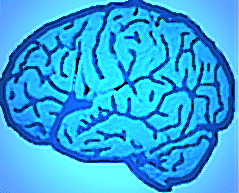
Neuroscience: A Journey Through the Brain
 |
Neuroscience: A Journey Through the Brain |
| Main Page Organization Development Neuron Systems About the site (Glossary) References |
Classification of Neurons
It is very unlikely that we can ever hope to understand how each of the hundred billion neurons in the brain contribute to the functioning of the nervous system. However, neuroscientists have devised several ways of categorizing neurons that will make their roles easier to understand.
|
Neurites: |
Neurons can be classified by the number of neurites (axons and dendrites) that extend from the cell body (soma). Cells can be unipolar, bipolar, or multipolar. |
|
Dendrites: |
Dendritic trees can vary widely between neurons. In the cerebral cortex, there are two types: pyramidal cells (pyramid shaped) and stellate cells (star shaped). Cells can also be classified by whether the dendrites have spines or not. Those that do are called spiny and those that don't are called aspinous. Pyramidal cells are spiny, while stellate cells can be spiny or aspinous. |
| Connections: |
Neurons can be classified based on their connections to different tissue types in the body. Neurons that have connections to sensory surfaces, such as the skin, are primary sensory neurons. Neurons that form synapses with muscles are motorneurons. However, most neurons form connections with other neurons - these are the interneurons. |
| Axon Length: |
Neurons can be differentiated based on how long of an axon they have. Neurons with very long axons that extend from on area of the brain to another are the Golgi Type I, while those with short, local circuit axons are the Golgi Type II. |
| Neurotransmitter: |
Aside from neuron morphology, neurons can also be classified based on their chemistry - the neurotransmitter(s) they release. For example, neurons that release acetylcholine are called cholinergic neuron. |
Created and Maintained by: Melissa
Davies
Last Updated: April 09, 2002 08:58 PM